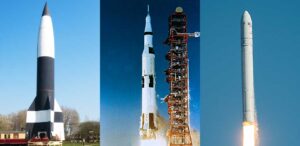Ion Thrusters – What They Are And How They Work
With so much focus on rocket fuels like hydrogen and new alternatives like liquid methane, it is hard to believe that an advanced form of propulsion known as ion thrusters…

With so much focus on rocket fuels like hydrogen and new alternatives like liquid methane, it is hard to believe that an advanced form of propulsion known as ion thrusters…

All spacecraft, whether they orbit Earth at altitudes of a few hundred miles or explore Saturn 886 million miles away, always establish a specific orbit around a celestial body after…

A Falcon 9 rocket unexpectedly exploded on the launchpad in 2016 due to a failure in the helium system used to pressurize the propellant tanks. This raises the question of…

When watching a live rocket launch, you may hear the callout “Engine chill has started,” which forms a crucial part of the prelaunch “checklist” performed before each orbital launch. We…

When rocket fuels are mentioned, liquid hydrogen, RP-1, or liquid methane typically come to mind. Another liquid propellant, though, called hypergolic fuel, has been used for decades in spaceflight due…

During the early years of spaceflight, rockets were considered expendable. However, as private space launch providers started entering the industry at the start of this Century, the importance of reusability…

Almost all orbital rockets, from the Saturn V carrying astronauts to the Lunar surface in the 1960s to a modern Falcon 9 or Ariane 6, are primarily white in color….

The vast majority of liquid rocket propellants, like hydrogen, methane, and liquid oxygen, are cryogenic since they are stored at subzero temperatures to stay in a liquid form. It poses…

Regular viewers of rocket launches will have noticed the white “smoke” plumes produced by a rocket’s boosters expanding horizontally away from the launchpad before billowing up. This is a result…

Regular viewers of live orbital rocket launches might have seen two objects falling away from the rocket shortly after second-stage ignition. These are known as payload fairings. We take a…